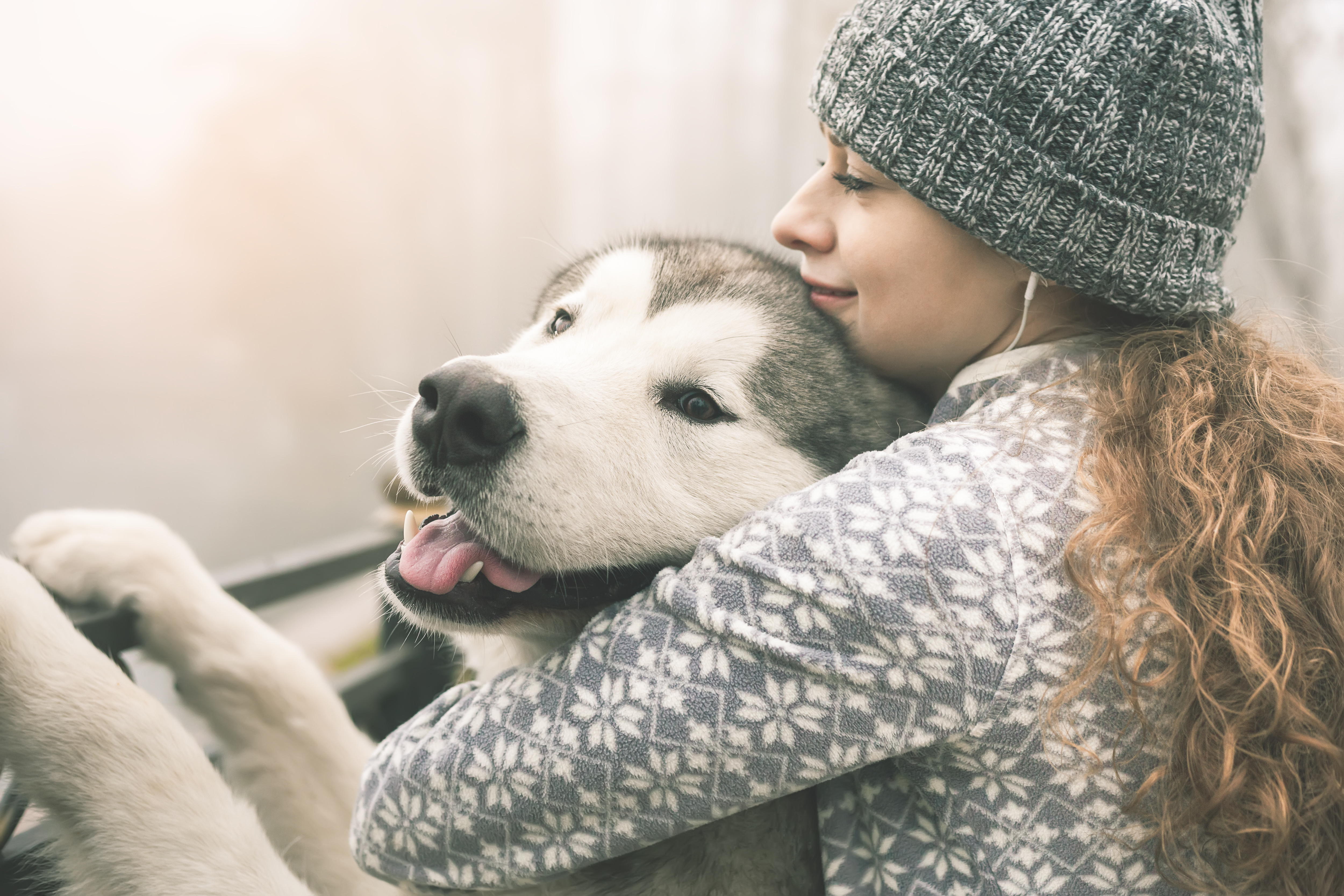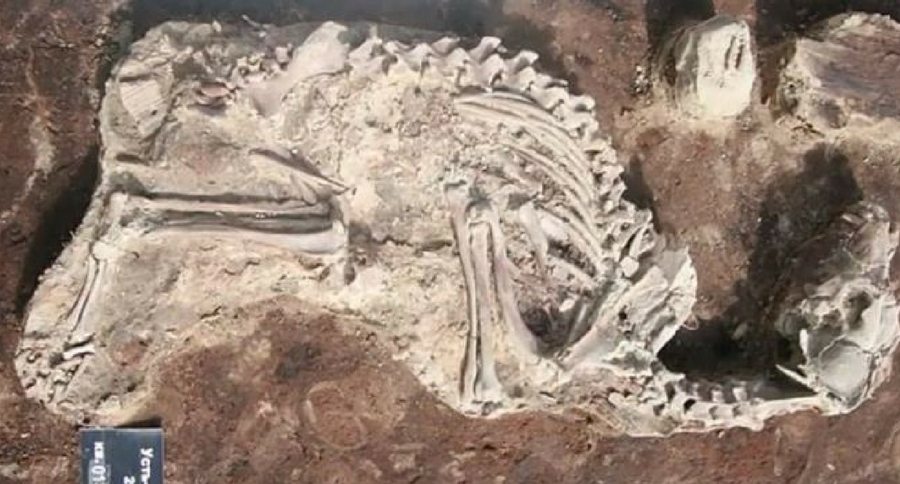80 million U.S. households with pets enjoy the benefits of the human-animal bond. Now we discover this bond goes back 14,000 years.
The human-animal bond is a mutually beneficial and dynamic relationship between people and animals. This bond has a powerful impact on the health and well-being of both.
A new analysis of a 14,000-year-old canine fossil reveals the earliest evidence of this human-animal bond. The study published recently in the Journal of Archaeological Science shows that prehistoric people "likely cared for a sick puppy for weeks before it died, suggesting an emotional attachment to the animal."
According to archeologists, the remains (a dog, a man, and woman) date back to the Paleolithic era. This new examination by veterinarian and Leiden University Ph.D. candidate Luc Janssens, unveiled problems with the dog's teeth that had not been previously reported. This analysis points to evidence that the puppy was well cared for before it died from an illness known as canine distemper virus. Without intensive care, it could not have survived long, but it survived as long as it did with human help.

According to Liane Giemsch, paper co-author and curator at the Archäologisches Museum Frankfurt:
"Since distemper is a life-threatening sickness with very high mortality rates, the dog must have been perniciously ill between the ages of 19 and 23 weeks. It probably could only have survived thanks to intensive and long-lasting human care and nursing."
Here, the University of Alberta and National Geographic recently discovered graves suggesting that humans loved and cared for dogs even in prehistoric times.
No one is surprised to learn this bond goes back to prehistoric times.
There is an emerging body of research that shows the benefits of positive interactions with companion animals in our lives. We are simply better living together.
The benefits of pet ownership include a reduction in cardiovascular disease risk, higher one-year survival rates following heart attacks, a lower blood pressure response to mental stress, and offers an antidote for loneliness.

If the human-animal bond is a topic you find interesting, the Human Animal Bond Research Institute (HABRI) is a leader in advancing the science that demonstrates the positive roles that pets and other animals play in the integrated health of individuals. They publish results from studies that reinforce their mission.
So the dog sitting next to you provides the same health benefits as one might have seen 14,000 years ago! Puppy love is everywhere!
And the veterinary community is also looking at human-animal interaction. The American Veterinary Medical Association (AVMA) is proud to be the founding educational partner for the Human-Animal Bond Certification Program offered through the Human Animal Bond Research Institute (HABRI) and the North American Veterinary Community (NAVC). The AVMA offers veterinary professionals a way to appreciate the science behind this bond:
"This certification allows veterinary professionals to get practical advice on how to ensure good bonds are built and maintained. It also demonstrates how communicating the bond's benefits to clients can help your patients and your practice."
Can you name examples of how the human-animal bond has made an impact on your life? Please add in the comments below!
All photos by MARTIN PÜTZ via National Geographic.
WATCH NOW: Why Pets Are the Best




